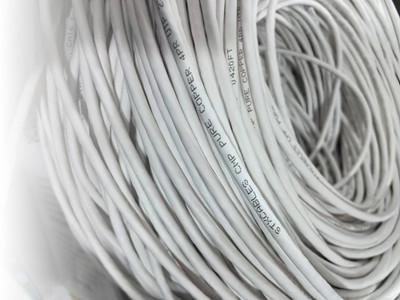The Ultimate Guide to Choosing the Right Ethernet Cable for Your Network Needs
Dec 31st 2024
Overview
Selecting the appropriate Ethernet cable is a crucial decision that impacts your network's speed and reliability. With options like Cat5e, Cat6, Cat6a, and Cat7 available, understanding their features and capabilities will help you make an informed choice. This guide dives into their specifications, applications, and key differences to ensure you select the best option for your needs.
What Are Ethernet Cables?
Definition and Purpose
Ethernet cables are the backbone of wired networking, enabling seamless data transfer and internet connectivity for homes, offices, and industrial environments.
Evolution Over Time
The evolution from Cat3 to Cat7 cables marks significant advancements in speed, bandwidth, and overall performance, reflecting the growing demands of modern technology.
Understanding Ethernet Cable Categories
Cat5e: The Budget-Friendly Performer
Overview
Cat5e (Category 5 Enhanced) builds on the original Cat5 design, reducing crosstalk for better performance.
- Speed: Up to 1 Gbps
- Bandwidth: 100 MHz
- Ideal For: Home and small office setups
- Pros: Affordable, widely available
- Cons: Limited scalability, lower performance
Cat6: The High-Speed Solution
Overview
Cat6 cables offer a significant leap in speed and performance, making them ideal for larger networks.
- Speed: Up to 10 Gbps (short distances)
- Bandwidth: 250 MHz
- Ideal For: Offices and data centers requiring faster connections
- Pros: Reduced crosstalk, high speeds
- Cons: Slightly stiffer, higher cost
Cat6a: Performance Meets Future-Proofing
Overview
Cat6a (Category 6 Augmented) enhances Cat6 capabilities, especially over longer distances.
- Speed: Up to 10 Gbps
- Bandwidth: 500 MHz
- Ideal For: High-speed, long-distance networking in large spaces
- Pros: Future-proof, excellent performance
- Cons: Higher cost, less flexibility
Cat7: The Cutting-Edge Choice
Overview
Cat7 cables deliver the highest speeds and best shielding, tailored for demanding environments.
- Speed: Up to 10 Gbps
- Bandwidth: 600 MHz
- Ideal For: Industrial and professional networks
- Pros: Superior shielding, top-tier performance
- Cons: High cost, requires specialized connectors
Comparing the Categories
- Speed: Cat7 = Cat6a > Cat6 > Cat5e
- Bandwidth: Cat7 (600 MHz) > Cat6a (500 MHz) > Cat6 (250 MHz) > Cat5e (100 MHz)
- Cost: Cat5e is the most affordable, while Cat7 is the priciest option.
Choosing the Right Cable for Your Needs
- Home Use: Cat5e or Cat6 offers sufficient speed and reliability.
- Office Use: Cat6a provides the balance of performance and scalability.
- Industrial Use: Cat7 ensures durability and minimal interference in demanding environments.
Conclusion
Whether you’re upgrading a home setup or building a high-performance network, selecting the right Ethernet cable—Cat5e, Cat6, Cat6a, or Cat7—ensures robust connectivity and speeds tailored to your needs. Visit BNCables online to explore our range of Ethernet cables and find the perfect fit for your network.

